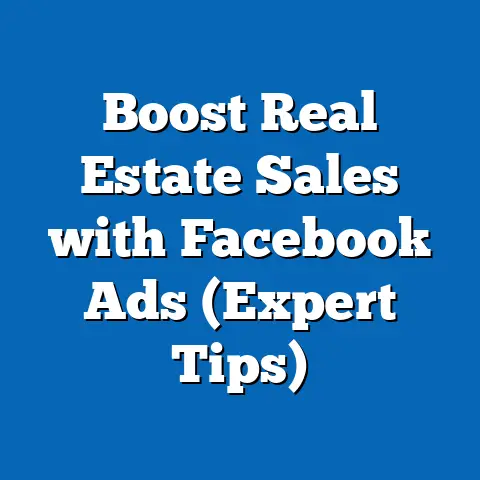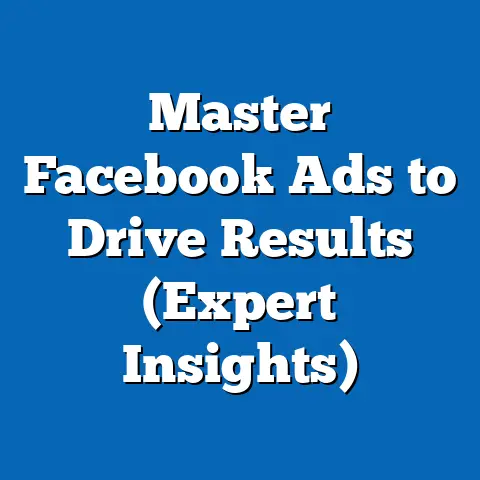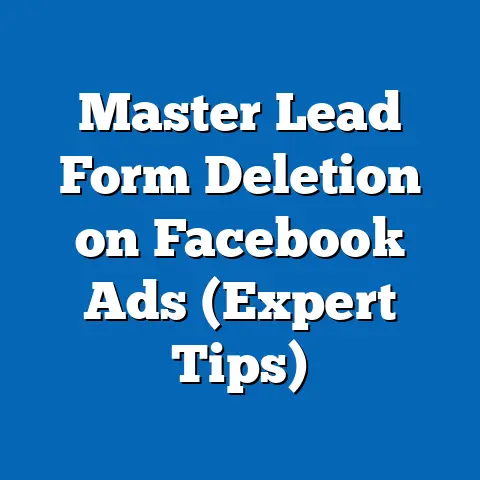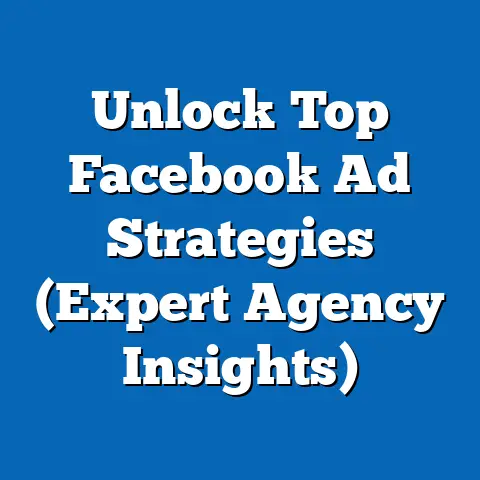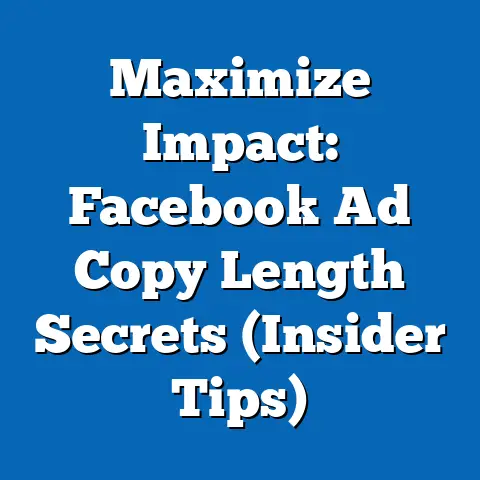Boost Business with Facebook Ads in Barcelona (Expert Guide)
I’ve spent years navigating the ever-changing landscape of digital marketing, and one thing has remained constant: the power of a well-executed Facebook Ads campaign. But simply running ads isn’t enough. To truly succeed, especially in a vibrant and competitive market like Barcelona, you need a layered approach, a strategy that integrates multiple marketing channels and techniques into a cohesive whole. Think of it as building a delicious paella – each ingredient (channel) contributes to the overall flavor (success), but it’s the careful layering and cooking process that brings it all together.
Barcelona, with its unique blend of culture, innovation, and entrepreneurial spirit, presents a fantastic opportunity for businesses. However, standing out from the crowd requires more than just a great product or service. It demands a strategic approach to reaching your target audience, and that’s where Facebook Ads come in. In this guide, I’ll walk you through everything you need to know to leverage Facebook Ads to boost your business in Barcelona, from the fundamentals to advanced strategies tailored to the local market.
Section 1: Understanding Facebook Ads
What are Facebook Ads?
Facebook Ads are paid advertisements that appear on Facebook and its affiliated platforms, including Instagram, Messenger, and the Audience Network. They allow businesses to reach a highly targeted audience based on demographics, interests, behaviors, and more. Unlike organic content, which relies on algorithms and luck to reach users, Facebook Ads provide a guaranteed level of visibility and control over who sees your message.
Think of it like this: Imagine you’re opening a new tapas bar in Gràcia. You could rely on word-of-mouth and local flyers, but with Facebook Ads, you can specifically target people living in Gràcia who are interested in Spanish cuisine, nightlife, and local bars. You can even target those who have recently checked into other tapas bars in the area! That’s the power of targeted advertising.
The Evolution of Facebook Ads
Facebook Ads have come a long way since their humble beginnings. Initially, they were simple text-based ads with limited targeting options. Today, they’re sophisticated multimedia experiences with advanced targeting capabilities, powered by machine learning and data analytics.
I remember back in the early days, the focus was just on getting clicks. Now, it’s all about driving meaningful results – generating leads, increasing sales, building brand awareness, and fostering customer loyalty. Facebook has continuously evolved its ad platform to meet the changing needs of businesses and the evolving behaviors of its users. This evolution is especially important in a dynamic market like Barcelona, where trends and preferences can shift rapidly.
Facebook User Demographics in Barcelona and Catalonia
Before diving into the specifics of creating and optimizing Facebook Ads, it’s crucial to understand the platform’s user demographics in Barcelona and Catalonia. Understanding your audience is the foundation of any successful marketing campaign.
According to recent data, Facebook remains a dominant social media platform in the region. Here are some key statistics:
- Penetration Rate: A significant percentage of the population in Barcelona and Catalonia uses Facebook regularly. While specific numbers fluctuate, it consistently ranks among the top social media platforms in terms of active users.
- Age Distribution: Facebook’s user base in the region spans a wide age range, from young adults to older demographics. This makes it a versatile platform for reaching diverse target audiences.
- Interests and Behaviors: Facebook’s rich data on user interests and behaviors allows businesses to target specific niches and demographics with precision. For example, you can target people who are interested in FC Barcelona, Catalan cuisine, or local events.
Takeaway: Understanding the demographics and behaviors of Facebook users in Barcelona is essential for crafting targeted and effective ad campaigns. Don’t assume that what works in another city will automatically work here.
Section 2: Benefits of Using Facebook Ads for Businesses in Barcelona
Targeted Reach
One of the biggest advantages of Facebook Ads is its unparalleled targeting capabilities. You can target your audience based on a wide range of criteria, including:
- Demographics: Age, gender, location, education, job title, and more.
- Interests: Hobbies, passions, favorite brands, and other interests.
- Behaviors: Purchase history, online activities, and engagement with specific types of content.
- Location: Target users within a specific radius of your business location, or even target entire neighborhoods or districts.
This level of granularity allows you to reach the right people with the right message at the right time. For example, if you’re running a language school in Eixample, you can target expats living in the area who are interested in learning Spanish.
Cost-Effectiveness
Compared to traditional advertising methods like print or television, Facebook Ads can be incredibly cost-effective. You have complete control over your budget, and you only pay when people see or interact with your ads.
I’ve seen small businesses in Barcelona achieve remarkable results with relatively small budgets. The key is to be strategic with your targeting and create compelling ads that resonate with your audience. You can start with a small daily budget and gradually increase it as you see positive results.
Measurable Results
Unlike many traditional advertising channels, Facebook Ads provide detailed data on ad performance. You can track key metrics such as:
- Impressions: The number of times your ad was shown.
- Reach: The number of unique people who saw your ad.
- Clicks: The number of times people clicked on your ad.
- Click-Through Rate (CTR): The percentage of people who saw your ad and clicked on it.
- Conversions: The number of people who took a desired action, such as making a purchase or filling out a form.
- Return on Ad Spend (ROAS): The amount of revenue generated for every dollar spent on advertising.
This data allows you to see exactly what’s working and what’s not, so you can optimize your campaigns for maximum ROI. I always tell my clients, “If you can’t measure it, you can’t improve it.” Facebook Ads provide the tools to measure and improve your marketing efforts.
Examples of Successful Facebook Ad Campaigns in Barcelona
Numerous businesses in Barcelona have successfully leveraged Facebook Ads to achieve their marketing goals. Here are a few examples:
- A Local Restaurant: A tapas bar in El Born used Facebook Ads to promote a special menu for tourists and locals. By targeting users interested in Spanish cuisine, local events, and travel, they were able to increase reservations and foot traffic.
- A Fashion Boutique: A clothing store in Gràcia used Facebook Ads to showcase their latest collection and drive online sales. They targeted fashion-conscious users in the area with visually appealing ads featuring local influencers.
- A Language School: A language school in Eixample used Facebook Ads to attract new students to their Spanish courses. They targeted expats living in Barcelona who were interested in learning the language.
These examples demonstrate the versatility of Facebook Ads and their potential to drive results for businesses across various industries in Barcelona.
Takeaway: Facebook Ads offer a powerful combination of targeted reach, cost-effectiveness, and measurable results, making them an essential tool for businesses looking to succeed in the Barcelona market.
Section 3: Setting Up Your Facebook Ad Account
Creating a Facebook Business Manager Account
Before you can start running Facebook Ads, you need to set up a Facebook Business Manager account. Think of Business Manager as the central hub for managing your Facebook Pages, ad accounts, and other business assets.
Here’s a step-by-step guide:
- Go to business.facebook.com and click “Create Account.”
- Enter your business name, your name, and your business email address.
- Follow the prompts to set up your account.
It’s important to use a professional email address associated with your business, not your personal email. This helps to maintain a clear separation between your personal and business activities.
Setting Up an Ads Manager and Linking it to a Facebook Page
Once you have a Business Manager account, you need to set up an Ads Manager and link it to your Facebook Page. Ads Manager is the tool you’ll use to create, manage, and analyze your Facebook Ads campaigns.
Here’s how to do it:
- In Business Manager, go to “Ad Accounts” and click “Add.”
- Choose “Create a New Ad Account.”
- Enter your ad account name, time zone, and currency.
- Assign yourself and any other team members to the ad account.
- Go to “Pages” and click “Add.”
- Choose “Add a Page” and select your Facebook Page.
Make sure you have administrative access to both your Business Manager account and your Facebook Page to ensure a smooth setup process.
Understanding Facebook’s Advertising Policies and Guidelines
Facebook has strict advertising policies and guidelines that you need to adhere to. Failure to comply with these policies can result in your ads being disapproved or your ad account being suspended.
It’s crucial to familiarize yourself with these policies before you start creating ads. You can find them on the Facebook Business Help Center. Some key areas to pay attention to include:
- Prohibited Content: Facebook prohibits ads that promote illegal products or services, discriminate against certain groups, or contain misleading or deceptive information.
- Personal Attributes: You can’t target ads based on sensitive personal attributes like race, religion, sexual orientation, or health status.
- Grammar and Punctuation: Your ads should be grammatically correct and free of typos.
- Misleading Claims: You can’t make false or exaggerated claims about your products or services.
I’ve seen many businesses get their ads disapproved due to simple mistakes like using excessive capitalization or making unsubstantiated claims. Take the time to review the policies and ensure that your ads are compliant.
Takeaway: Setting up your Facebook Ad account correctly and understanding Facebook’s advertising policies are essential for running successful and compliant campaigns.
Section 4: Crafting Your Facebook Ads
Key Components of an Effective Facebook Ad
A successful Facebook Ad consists of three key components:
- Visuals: High-quality images or videos that capture attention and convey your message.
- Copy: Compelling text that resonates with your target audience and persuades them to take action.
- Call-to-Action (CTA): A clear and concise instruction that tells people what you want them to do.
These elements work together to create a cohesive and engaging ad experience.
Creating Compelling Ad Copy that Resonates with the Barcelona Audience
Your ad copy should be clear, concise, and relevant to your target audience in Barcelona. Here are some tips for writing effective ad copy:
- Speak the Language: Use Catalan or Spanish in your ad copy to connect with the local audience.
- Highlight Local Relevance: Mention local landmarks, events, or cultural references to make your ads more relevant.
- Focus on Benefits: Emphasize the benefits of your product or service, rather than just listing features.
- Use Strong Verbs: Use action-oriented verbs that encourage people to take action, such as “Discover,” “Learn,” or “Shop.”
- Keep it Short and Sweet: People have short attention spans, so keep your ad copy concise and to the point.
I’ve found that using humor and local slang can be effective in capturing attention and creating a connection with the Barcelona audience. However, be careful not to be offensive or insensitive.
Using High-Quality Images and Videos that Reflect Local Culture and Landmarks
Your visuals are the first thing people will see, so it’s crucial to use high-quality images and videos that capture attention and convey your message.
Here are some tips for using visuals effectively:
- Use Professional-Quality Images: Avoid blurry or pixelated images.
- Showcase Your Product or Service: Use images or videos that showcase your product or service in action.
- Reflect Local Culture: Use images or videos that feature local landmarks, events, or cultural references.
- Use Faces: People are drawn to faces, so use images or videos that feature people using your product or service.
- Keep it Relevant: Make sure your visuals are relevant to your ad copy and target audience.
For example, if you’re promoting a walking tour of the Gothic Quarter, use images or videos that showcase the iconic landmarks and architecture of the area.
Takeaway: Crafting compelling ad copy and using high-quality visuals that resonate with the Barcelona audience are essential for creating effective Facebook Ads.
Section 5: Targeting Your Audience
Facebook’s Targeting Options
Facebook offers a wide range of targeting options that allow you to reach specific audiences based on demographics, interests, behaviors, and location.
Here’s a breakdown of some of the key targeting options:
- Demographics: Target users based on age, gender, education, job title, relationship status, and more.
- Interests: Target users based on their hobbies, passions, favorite brands, and other interests.
- Behaviors: Target users based on their purchase history, online activities, and engagement with specific types of content.
- Location: Target users within a specific radius of your business location, or even target entire neighborhoods or districts.
- Connections: Target users who are connected to your Facebook Page, or target their friends.
These targeting options allow you to narrow your audience and reach the people who are most likely to be interested in your product or service.
Creating Customer Personas to Refine Your Target Audience
Creating customer personas is a valuable exercise for refining your target audience. A customer persona is a fictional representation of your ideal customer, based on research and data about your existing customers.
Here are some key elements to include in your customer personas:
- Demographics: Age, gender, location, education, job title, income.
- Interests: Hobbies, passions, favorite brands, online activities.
- Pain Points: What challenges or frustrations do they face?
- Goals: What are they trying to achieve?
- Motivations: What motivates them to buy your product or service?
By creating detailed customer personas, you can gain a deeper understanding of your target audience and create ads that resonate with their specific needs and desires. For example, if you’re targeting tourists visiting Barcelona, your customer persona might be a young traveler interested in exploring local culture and trying new experiences.
Using Custom Audiences and Lookalike Audiences for Local Targeting
Custom Audiences and Lookalike Audiences are powerful tools for local targeting.
- Custom Audiences: Allow you to target users based on your existing customer data, such as email addresses, phone numbers, or website visitors. You can upload this data to Facebook and create a Custom Audience to target with your ads.
- Lookalike Audiences: Allow you to target users who are similar to your existing customers. You can create a Lookalike Audience based on your Custom Audience or your Facebook Page followers.
These tools are particularly useful for targeting local customers who have already interacted with your business or are similar to those who have. For example, you can create a Custom Audience of people who have visited your website and then create a Lookalike Audience to target people who are similar to your website visitors.
Takeaway: Facebook’s targeting options, combined with customer personas and Custom/Lookalike Audiences, provide powerful tools for reaching your ideal customers in Barcelona.
Section 6: Budgeting and Bidding Strategies
Budgeting Options for Facebook Ads
Facebook offers two main budgeting options:
- Daily Budget: Sets a fixed amount that you’re willing to spend each day.
- Lifetime Budget: Sets a total amount that you’re willing to spend over the entire duration of your campaign.
The best option for you will depend on your specific goals and campaign strategy.
- Daily Budget: Ideal for campaigns that run continuously, such as brand awareness campaigns or always-on lead generation campaigns.
- Lifetime Budget: Ideal for campaigns that run for a specific period of time, such as promoting a limited-time offer or event.
I typically recommend starting with a daily budget, as it gives you more flexibility to adjust your spend as needed.
Bidding Strategies: Automatic Bidding vs. Manual Bidding
Facebook offers two main bidding strategies:
- Automatic Bidding: Facebook automatically sets your bids to get the most results for your budget.
-
Manual Bidding: You manually set your bids for each ad set.
-
Automatic Bidding: A good option for beginners or for campaigns where you’re not sure what to bid.
- Manual Bidding: Allows you to have more control over your bids and potentially get better results, but it requires more expertise and monitoring.
Manual Bidding: You manually set your bids for each ad set.
Automatic Bidding: A good option for beginners or for campaigns where you’re not sure what to bid.
I often advise clients to start with automatic bidding and then switch to manual bidding once they have a better understanding of how Facebook’s bidding system works.
Optimizing Your Ad Spend for Maximum ROI
Here are some tips for optimizing your ad spend for maximum ROI:
- Target the Right Audience: Make sure you’re targeting the right people with your ads.
- Create Compelling Ads: Use high-quality visuals and compelling ad copy that resonates with your target audience.
- Monitor Your Results: Track your key performance indicators (KPIs) and make adjustments to your campaigns as needed.
- A/B Test Your Ads: Experiment with different ad copy, visuals, and targeting options to see what works best.
- Use Retargeting: Retarget users who have already interacted with your business to increase conversions.
Remember, optimizing your ad spend is an ongoing process. You need to continuously monitor your results and make adjustments to your campaigns to ensure that you’re getting the best possible ROI.
Takeaway: Choosing the right budgeting and bidding strategies, and continuously optimizing your ad spend, are essential for maximizing your ROI on Facebook Ads in Barcelona.
Section 7: Analyzing and Optimizing Facebook Ads
Analyzing Ad Performance Using Facebook Insights
Facebook Insights provides a wealth of data on the performance of your ads. You can use this data to understand how your ads are performing and make adjustments to improve your results.
Here are some key metrics to track in Facebook Insights:
- Reach: The number of unique people who saw your ad.
- Impressions: The number of times your ad was shown.
- Clicks: The number of times people clicked on your ad.
- Click-Through Rate (CTR): The percentage of people who saw your ad and clicked on it.
- Cost Per Click (CPC): The average cost of each click.
- Conversions: The number of people who took a desired action, such as making a purchase or filling out a form.
- Cost Per Conversion (CPC): The average cost of each conversion.
- Return on Ad Spend (ROAS): The amount of revenue generated for every dollar spent on advertising.
By tracking these metrics, you can identify areas where your ads are performing well and areas where they need improvement.
Key Performance Indicators (KPIs) to Track
The specific KPIs you should track will depend on your campaign goals. However, here are some common KPIs that are relevant to most businesses:
- Brand Awareness: Reach, impressions, and frequency (the average number of times someone saw your ad).
- Lead Generation: Cost per lead (CPL), conversion rate, and lead quality.
- Sales: Cost per acquisition (CPA), conversion rate, and return on ad spend (ROAS).
- Website Traffic: Clicks, click-through rate (CTR), and bounce rate.
It’s important to set realistic goals for your KPIs and track your progress over time.
A/B Testing Ads and Making Data-Driven Decisions
A/B testing is a powerful technique for optimizing your Facebook Ads. It involves creating two versions of an ad with a single difference (e.g., different ad copy, different visuals, different targeting options) and then testing which version performs better.
Here are some tips for A/B testing your ads:
- Test One Variable at a Time: To get accurate results, only test one variable at a time.
- Use a Large Enough Sample Size: Make sure you have a large enough sample size to get statistically significant results.
- Run Your Tests for a Sufficient Period of Time: Run your tests for at least a week to account for variations in performance.
- Analyze Your Results: Use Facebook Insights to analyze your results and identify the winning version of your ad.
- Implement Your Findings: Implement the findings from your A/B tests to improve your ad performance.
I’ve seen significant improvements in ad performance by simply A/B testing different headlines or call-to-action buttons.
Takeaway: Analyzing your ad performance, tracking key KPIs, and A/B testing your ads are essential for making data-driven decisions and optimizing your Facebook Ads campaigns in Barcelona.
Section 8: Leveraging Facebook Ad Features for Barcelona Businesses
Advanced Features: Facebook Pixel, Dynamic Ads, and Retargeting
Facebook offers a range of advanced features that can help you take your ad campaigns to the next level:
- Facebook Pixel: A snippet of code that you place on your website to track conversions and website visitors. This data can be used to create Custom Audiences and optimize your ad campaigns.
- Dynamic Ads: Automatically show the right products to the right people based on their browsing behavior on your website. This is particularly useful for e-commerce businesses.
- Retargeting: Target users who have already interacted with your business, such as website visitors, Facebook Page followers, or people who have watched your videos. This is a highly effective way to increase conversions.
These features can significantly improve the performance of your ad campaigns, but they require some technical expertise to set up and manage.
Leveraging Local Events, Holidays, and Festivals in Ad Campaigns
Barcelona is a city of vibrant culture and numerous local events, holidays, and festivals. You can leverage these events to create timely and relevant ad campaigns.
For example, you can run ads promoting special offers during La Mercè, the city’s annual festival, or during the Christmas season. You can also target users who are attending specific events, such as concerts or sporting events.
I’ve found that ads that are tied to local events and holidays tend to perform very well, as they are highly relevant to the target audience.
User-Generated Content and Testimonials
User-generated content (UGC) and testimonials can be powerful tools for building trust and engagement. UGC is content created by your customers, such as photos, videos, or reviews. Testimonials are statements from satisfied customers that endorse your product or service.
You can use UGC and testimonials in your ad campaigns to showcase the positive experiences of your customers and build credibility. For example, you can run ads featuring photos of customers using your product or service, or you can include testimonials in your ad copy.
I always encourage my clients to collect UGC and testimonials from their customers, as this is a valuable asset that can be used to enhance their marketing efforts.
Takeaway: Leveraging advanced features like the Facebook Pixel, dynamic ads, and retargeting, and incorporating local events and user-generated content, can significantly enhance the effectiveness of your Facebook Ads campaigns in Barcelona.
Section 9: Case Studies of Successful Facebook Ad Campaigns in Barcelona
Case Study 1: A Local Restaurant
Business: A tapas bar in El Born.
Challenge: Increase reservations and foot traffic.
Strategy:
- Targeted users interested in Spanish cuisine, local events, and travel within a 2-mile radius of the restaurant.
- Created visually appealing ads showcasing the restaurant’s signature tapas and ambiance.
- Offered a special menu for tourists and locals.
- Used a call-to-action button to encourage reservations.
Results:
- Increased reservations by 30%.
- Increased foot traffic by 20%.
- Generated a positive return on ad spend (ROAS).
Key Lessons:
- Targeting the right audience is crucial for success.
- Visually appealing ads can capture attention and drive engagement.
- Offering a special menu can incentivize customers to visit the restaurant.
Case Study 2: A Fashion Boutique
Business: A clothing store in Gràcia.
Challenge: Drive online sales.
Strategy:
- Targeted fashion-conscious users in the area with visually appealing ads featuring local influencers wearing the store’s latest collection.
- Offered a discount code for first-time online purchases.
- Used a call-to-action button to encourage shopping.
- Utilized Facebook Pixel to track conversions and retarget website visitors.
Results:
- Using local influencers can build credibility and drive engagement.
- Offering a discount code can incentivize first-time purchases.
- Retargeting website visitors can increase conversions.
Case Study 3: A Language School
Business: A language school in Eixample.
Challenge: Attract new students to their Spanish courses.
Strategy:
- Targeted expats living in Barcelona who were interested in learning Spanish.
- Created ads highlighting the benefits of learning Spanish, such as improving career prospects and integrating into the local culture.
- Offered a free trial class.
- Used a call-to-action button to encourage sign-ups.
- Utilized lead generation ads to collect contact information from interested users.
Results:
- Highlighting the benefits of your product or service can resonate with your target audience.
- Offering a free trial can incentivize sign-ups.
- Lead generation ads can be an effective way to collect contact information.
Takeaway: These case studies demonstrate the potential of Facebook Ads to drive results for businesses across various industries in Barcelona. By learning from these examples, you can develop your own successful Facebook Ad campaigns.
Remember, Facebook Ads are just one piece of the puzzle. To truly succeed, you need a layered marketing strategy that integrates multiple channels and techniques into a cohesive whole. When used strategically, Facebook Ads can be a powerful tool for reaching your target audience, driving traffic to your website, generating leads, and increasing sales.
Barcelona is a vibrant and competitive market, but with the right approach, you can stand out from the crowd and achieve your business goals. I encourage you to take action and start crafting your own Facebook Ad campaigns, keeping in mind the unique aspects of the local market.
Don’t be afraid to experiment, test different approaches, and learn from your results. The key is to be persistent, adaptable, and always focused on delivering value to your target audience.
Now go out there and boost your business with Facebook Ads in Barcelona! And remember, I’m always here to help if you need any further guidance or support.

